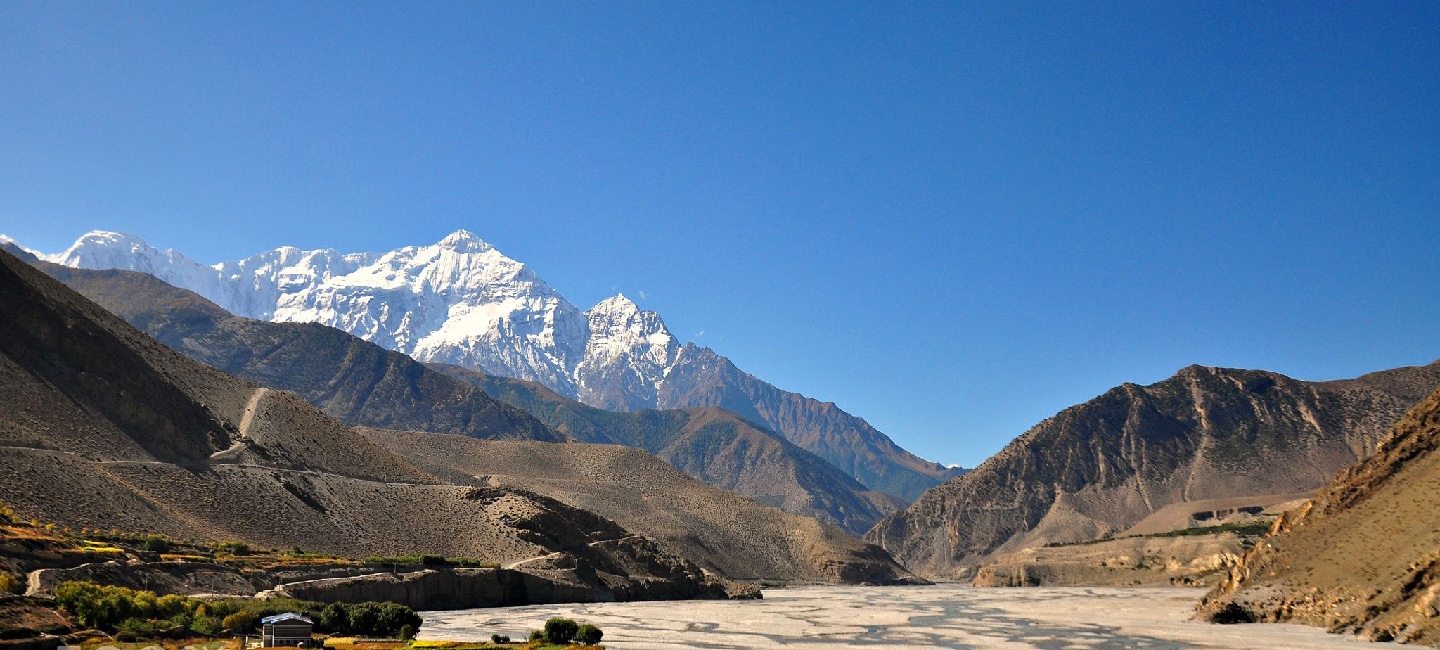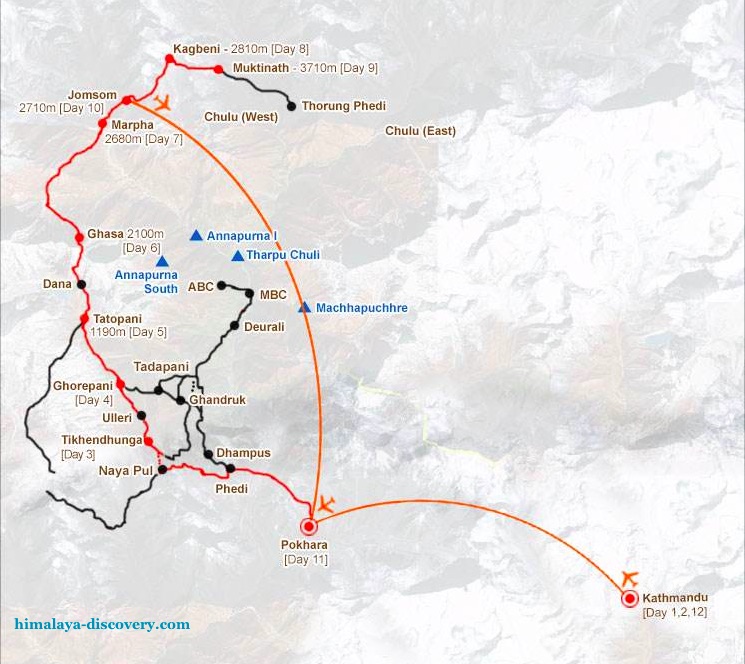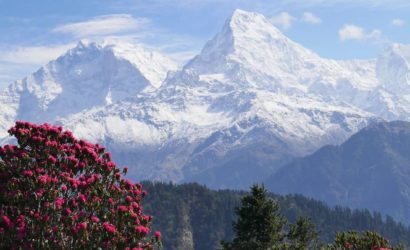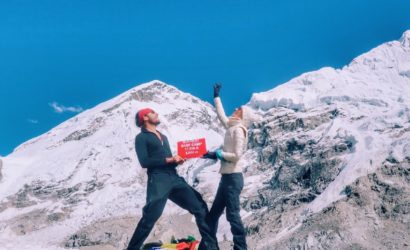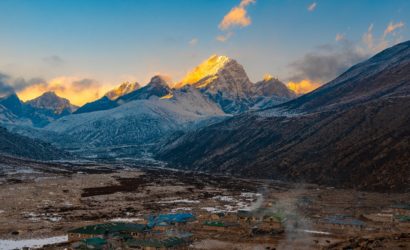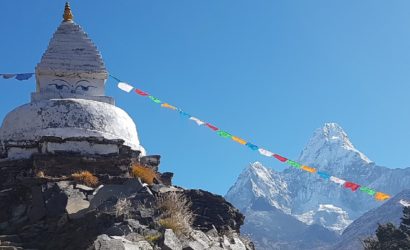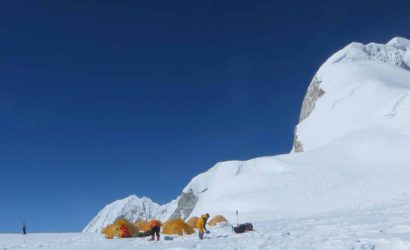Jomsom Muktinath Trek is a classic lodge base trek that begins with climbing uphill and then descends to the deepest gorge in the world, on the Kali Gandaki River, from the rhododendron (National Nepal Flower) forest to the beginning of the Tibetan village. It also gives us the opportunity to see cultural people mixing up with their ancient traditions until today.
The maximum elevation reached on this trek is 3900 meters and all the age groups can complete it. Keep walking slowly through rhododendron forests, the majestic Annapurna range reveal itself as you appear from the forest into Ghorepani. A short hike from Ghorepani will bring us to Poon Hill (3210 meters), a place of timeless beauty give us magnificent views of the Himalayan Mountains.
The Jomsom Muktinath Trek becomes interesting in Tatopani where you will have the opportunity to relax in natural hot springs Continue along the Kali Gandaki River Gorge, a phenomenon at the beautiful peaks of Annapurna-I and Dhaulagiri, both reaching heights of over 8000 meters.
A little added together with the first glimpse of the windy Tibetan village on the way to the holy Hindu and Buddhist pilgrimage site of Muktinath (3900 meters) the majesty of the Dhaulagiri Glacier is on display. The sacred temple has 108 waterfalls that remind you of tap-flowing water and the mysterious fires of natural gas that attracted the mind.
From here it’s down hill to the village of Jomsom, the people of Tibet and Thakali, where we can look around at the gateway to the “Forbidden Kingdom of Mustang” and glimpse the ancient traditions that still follow.
Jomsom Muktinath Trek Difficulty
Upon your arrival in the Kathmandu airport after completing your custom formalities Visa, etc. pick up your luggage and look for our airport representative from Himalaya Discovery, who will display your name on the board at the arrival gate. You will be greeted by our representative and transferred to your hotel by private tourist vehicle.
Today is free for sightseeing in Kathmandu. You may wish to visit Durbar Square in the heart of the old city where the old Royal Palace, with its intricate woodcarving is located. The whole area is a maze of temples and images. Leading away from the square in all directions are narrow alleys, full of the most amazing variety of shops and stalls.
Some of these landmarks are considered World Heritage Sites including the historic Bhaktapur Durbar Square, the famous ‘Monkey Temple’ Swayambhunath and Buddhists shrine Buddhanath which is one of the largest Stupas in the world.
There will also be a full trip briefing today with gear check. In case you need to hire or buy equipment locally there will be time to do this today.
Pokhara is a beautiful valley town, with panoramic views of Annurpurna, Machapuchare, and Dhaulagiri in the west, Lamjung Himal and Manaslu in the east. The town of Pokhara is considerably less hectic than Kathmandu and is the starting point of your trek.
Discover beautiful Phewa Lake, known for its tranquility and picture perfect postcards; or visit Devi Falls, a minor waterfall named after a tourist that fell inside. Overnight at hotel in Pokhara.
Arrive to Nayapul and after a short walk along the banks of the Modi Khola river, we reach Birethanti (1015m), a large village that has many shops and teahouses.
From here, the trail continues along the north bank of the Bhurungdi Khola before climbing steadily up the side of the valley to Hille (1495m) before reaching Tikhedungha at 1570m.
Today’s walk is a short and relatively easy climb to allow you to get used to the experience of trekking in Nepal. Overnight at guesthouse.
Leaving Tikhedhunga, we continue with our journey with a steep climb up Ulleri. Uleri is a large Magar village at 2070m. The trail then continues to ascend more gently, through fine forests of oak and rhododendrons towards Banthanti at 2250m. Then we trek towards Nangethanti at 2460m before arriving at Ghorepani at 2840m.
Ghorepani is a relatively large village with excellent views of the Annapurna range, Nilgiri and Dhaulagiri. Here you can stock up on supplies such as drinking water, snacks etc. Overnight at guesthouse.
Today, we wake up early to visit Poon Hill, for the spectacular sunrise over the Annapurna, Nilgiri and Dhaulagiri ranges. An excellent vantage point, Poon Hill provides an unobstructed view of the high Himalayas.
Here we spend an hour or so before returning back to Ghorepani for breakfast. Leaving Ghorepani, after breakfast, we continue our journey to Tatopani. The trail makes a descent steeply to Chitre at 2390 meters. As the trail drops down through Sikha, the hills are extensively terraced.
Sikha, from there the trail descends gently to Ghara at 1705 meters. A further steep descent of 500m takes you to the Ghar Khola where the trail crosses the river on a suspension bridge. As you turn north, it takes you to the Tatopani at 1100 meters. Enjoy the natural hot spring. Overnight at guesthouse.
Today, the trail climbs up the Kali Gandaki gorge, considered to be the deepest in the world which is situated between the two 8000 meters peaks of Annapurna and Dhaulagiri.
The trail rises gently up to Dana at 1400 meters, and onto Rupse Chhahara at 1550 meters, there you can see a stunning waterfall.
As the trail crosses to the eastern bank of the river, you will reach Kopchepani which crosses back to the western side on a suspension bridge at 1935 meters. Then a short climb to Ghasa at 2010 meters. Overnight at guesthouse.
We start the trek by crossing to the eastern side of the river, but cross back again further up the trail before entering Larjung at 2560 meters.
The trail continues on a short distance to the interesting village of Khobang with its narrow alleyways. Then we spend overnight at the ancient Thakali village of Tukuche at 2600 meters. Overnight at guesthouse.
From Tukche, we walk along the side of the valley to Jomsom. Jomsom is a large, bustling settlement and it’s the administrative centre to the region that contains the airport, army camp, hotels, shops, banks and government offices.
We cross the river to the eastern bank, then walk towards Eklai Bhatti. From here we take a direct route to Muktinath that ascends the hill behind the village, however we follow the trail along the river to Kagbeni, which is situated at the junction of the Jhong Khola & the Kali Gandaki which is the northern most village that can be visited without a permit to continue on to upper Mustang.
This village is fascinating with its rich Buddhist n cultures and their unique hospitality which influences us greatly. Overnight at guesthouse.
We make a steep climb up the Jhong Khola valley leaving Kagbeni, we then join the direct trail to Muktinath just below Khingar at 3200 meters. From here trail continues high above the Jhong Khola to the imposing village of Jharkot at 3500 meters, well worth exploring.
We take a break here for lunch before continuing on to Muktinath.As we leave Jharkot, the trail climbs up to our ultimate destination of Muktinath. We initially visit Ranipauwa, there are many tea houses and shops.Our overnight stay will be here.
Further 10 minutes’ walks up the hill, we will be rewarded with the actual religious site of Muktinath & this area is kept free of hotels and camping sites. Muktinath is a pilgrimage center for Buddhists and Hindus.
There we can see Tibetan traders as well as sadhus from the far south of India. There are shrines in a grove of trees including a Buddhists gompa & the Vishnu temple of Jwalamai. An old temple nearby shelters a spring and natural gas jets that provide Muktinath’s famous eternal flame.
It’s the earth-water- fire combination that accounts for Muktinath’s great religious significance. Overnight at guesthouse.
Today, we follow the same trail nearby Kagbeni and then the new trek takes you down to the Eklebhatti, then again follow same trail to Jomsom. Overnight at guesthouse.
Morning scenic flight takes us to Pokahra from Jomsom. Once we arrived at Pokhara airport, we then drive to hotel. The rest of the day will be free and relax.
Take a sightseeing tour around Pokhara valley if you are interested. Overnight back at hotel in Pokhara.
We depart at approximately 7.30am for Kathmandu by tourist bus. We arrive back in Kathmandu at around 2-3.00 pm.
Today is rest and relax throughout the day. If you get interested to take some gifts from Nepal for friends and relatives, visit to some nearby shops or go out in Thamel for typical Nepalese goods which can be assisted by our guide or you can do it yourself too or fly to home.
We will drop you to the airport for your flight departure from Nepal.

